
- Fashion
Painting in Black and White – “Mank’s” Costume Designer Trish Summerville
David Fincher’s latest work, Mank, allows viewers to experience one of Hollywood’s most legendary films, Citizen Kane, from behind Orson Welles’ camera. From the sound design mimicking crackling film reels to the classical composition of its cinematography, the film is an impressive recreation of the golden age of Hollywood. One of the most notable aspects of Mank’s immersivity is the elaborate and meticulous costume design, headed by Fincher’s long-time collaborator Trish Summerville that started on the set of the 1997 thriller The Game, where she was assistant costume director. Since then, Summerville has worked as head costume designer in The Girl With The Dragon Tattoo (2011) and Gone Girl (2014), fully winning over Fincher’s trust. The Mank director admitted, “I couldn’t be happier … My involvement [with costumes] is almost nil. You get Trish, and you get out of the way.”
Is Mank your first-period film with David Fincher?
Yes, even though in The Girl With The Dragon Tattoo we had some sixties flashback sequences, like a parade through town. But yes, Mank is my first full period.
Obviously, movies like Mank are a kind of a gift for a costume designer, right?
Yes, it’s such a gift. I’ve said this before when I’m looking for a project, first I look for either the director or the script, then you hope that there’s the potential for good costumes. This one it’s a win-win. It was a great director, script, and costumes. That’s really rare all those pieces come together.
How did you start to research for this movie? Did you start with Citizen Kane?
I did re-watch Citizen Kane because I hadn’t seen it since I was a teenager. I did a lot of research through reference libraries since a lot of the characters were real people. Luckily, there were quite a few images and photographs of Hearst and Marion Davies and Thalberg and of Mankiewicz. Also, we were looking at old black and white films that took place between the thirties and the forties. Checking out different photographs and art books. Looking at daily life like the 30s and 40s Sears catalogs, Life magazine and old Vogue. So, it was a varied amount of research.
I’m wondering if you do your own drawings and sketches for visual boards?
No, we do research boards which are compilations of images that could be anything depending on what the subject matter is but putting boards together for what each character should look like or what the scene should be. And then from there, I usually hire an illustrator. On this project, the illustrator I worked with was Gloria Kim. She was really fantastic because she came in and we had some meetings, and I showed her old fashion magazines that had illustrations in them, and she was really able to mimic and render that style. So, the illustrations she did had a very 1930s style and were all in black and white and sepia tones. We didn’t do anything in color.
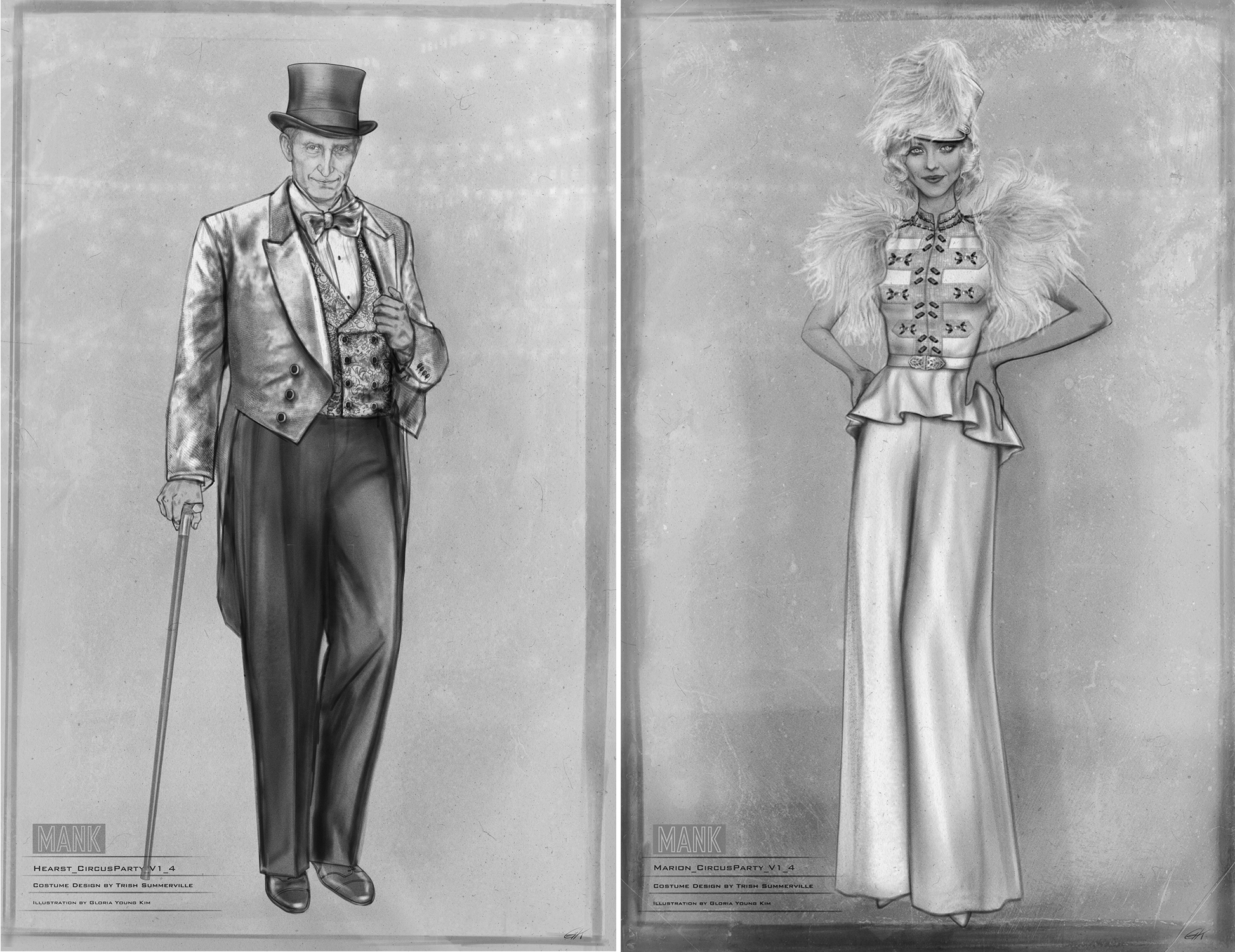
What was the biggest challenge for you in the process of creating costumes for a black and white movie?
Figuring out how to translate color into black and white so it stays interesting and that everything isn’t the same flat tone. We were going through various rental houses, pulling costumes and clothing and lining them up, photographing them in black and white. Figuring out what colors really worked in black and white and didn’t. And what happened a lot is odd colors that you don’t necessarily think would be the best, colors that read really well in black and white, were like chartreuse, bright green, lavender, and salmon. Those are really tricky to have visually on set. We try to kind of narrow it down to a certain color palette, so, it didn’t become too busy. We kept it to mostly light and jewel tones in the same colorway. And then also how patterns translated into black and white, a lot of times the patterns on fabric and clothing became confetti and really too bright and too bold. It was narrowing down how we wanted our color palette to look and also being able to get varying shades of blacks, whites, and grays. When you looked at it to kind of think like, “Oh that could be navy, or maybe that’s red or maybe that’s pink,” so that the film didn’t read flat.
Let’s start with the unique dinner scene with circus attire. David told me that you brought him research on circus theme parties, one of which had been thrown at San Simeon, at Marion Davies’ beach home, or maybe her Beverly Hills’ home.
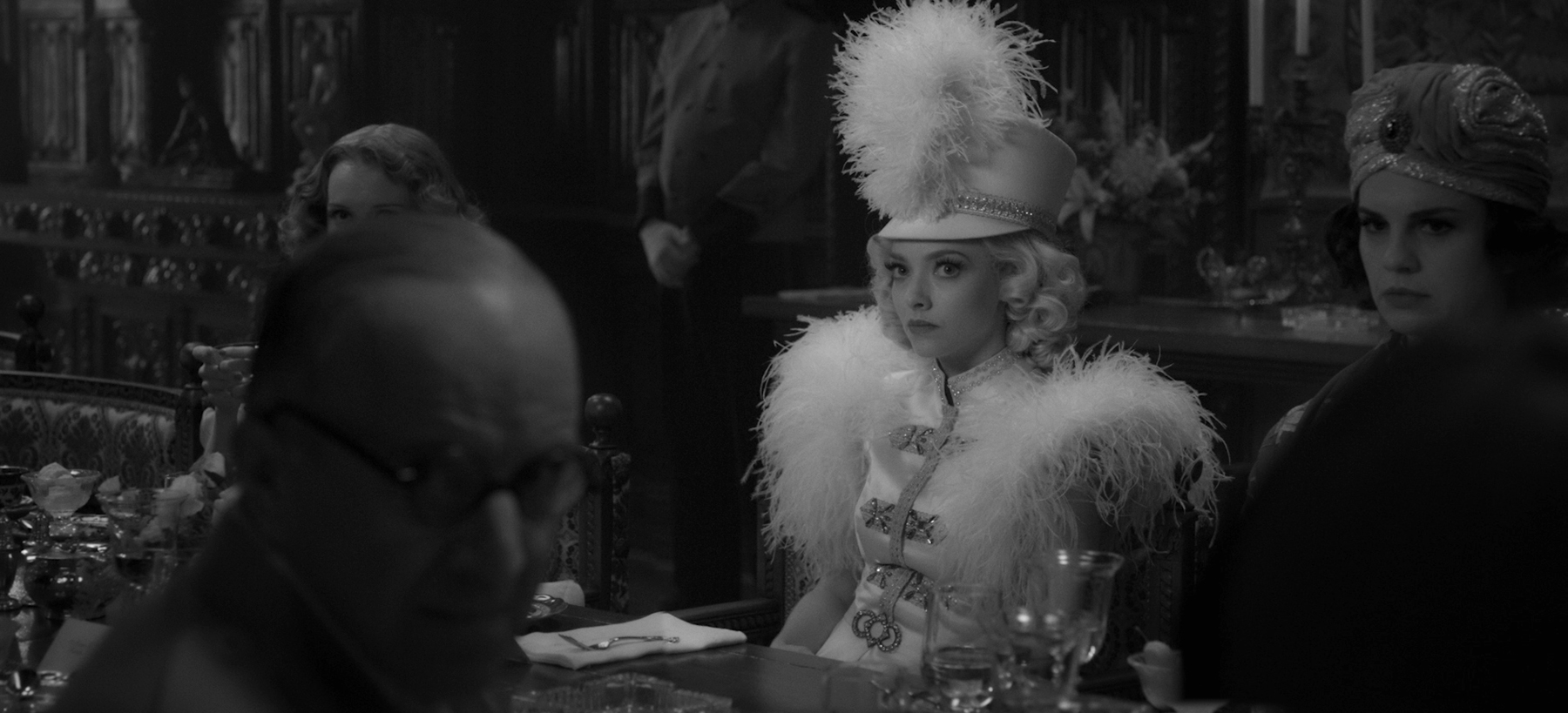
We found they did the Hearst parties very often, at least once a year. At first, they came up with the theme. We found images of a lot of the people in Lederhosen. When I looked up the particular year that David wanted to slot in the story, I found a lot of circus party images and then I was reading Marion’s book and how much she loved this circus party at the San Simeon Hearst residence. And she loved it so much that within a month she had another one at her Santa Monica house, so I thought, “This is ideal.” Let’s try and go for the circus party! It would be really interesting because of The Monkey Organ Grinder parable that Hearst is talking about. Then we’ll have Mank circling this table with this amazing monologue where people are dressed like clowns.
I really wanted Marion to be the candy in the middle of the room, to stand out, to be this really kind of beautiful starlet. Because that is what she was.
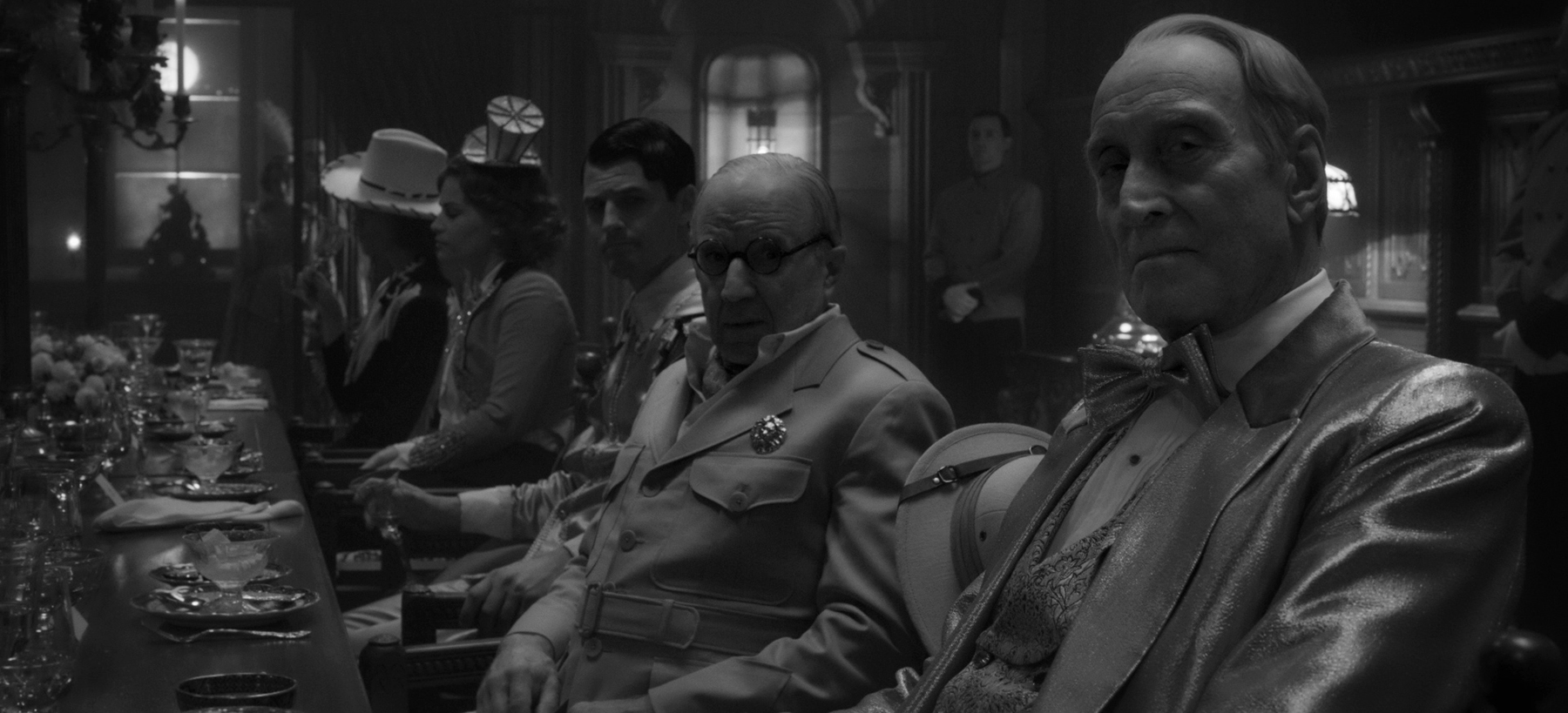
Luckily, we found a lot of images from the party and we were able to find actual photographs of Hearst, what he wore, and what Marion wore. We kind of mimicked those costumes and made them fit a little bit better, made the fabrics a bit nicer. For L.B. Mayer we couldn’t find any pictures of him in a costume. I asked David since he was the head of MGM, “Could I make him a lion tamer?” And put a lion head pin on his lion taming costume.
For the rest of the people, I just picked various things of photographs that I saw like there were images of Clark Gable who was dressed as a cowboy even though that’s not a circus theme. Then, Bette Davis, there’s an image of her where she just has on an organza dress and then a Mirabeau beard. So, she’s the bearded lady of the circus.
I chose different images that we found of people and made some people aerialists and acrobats and clowns and mimicked everything that we saw. It was really fun and great, an amazing scene to watch play out. Here’s Gary who comes in as Mank, totally drunk, in a suit – and everyone else is sitting at the table completely serious in these over-the-top, outlandish costumes. He’s the only one properly dressed but is a complete mess but gives this massive amazing long dialogue.
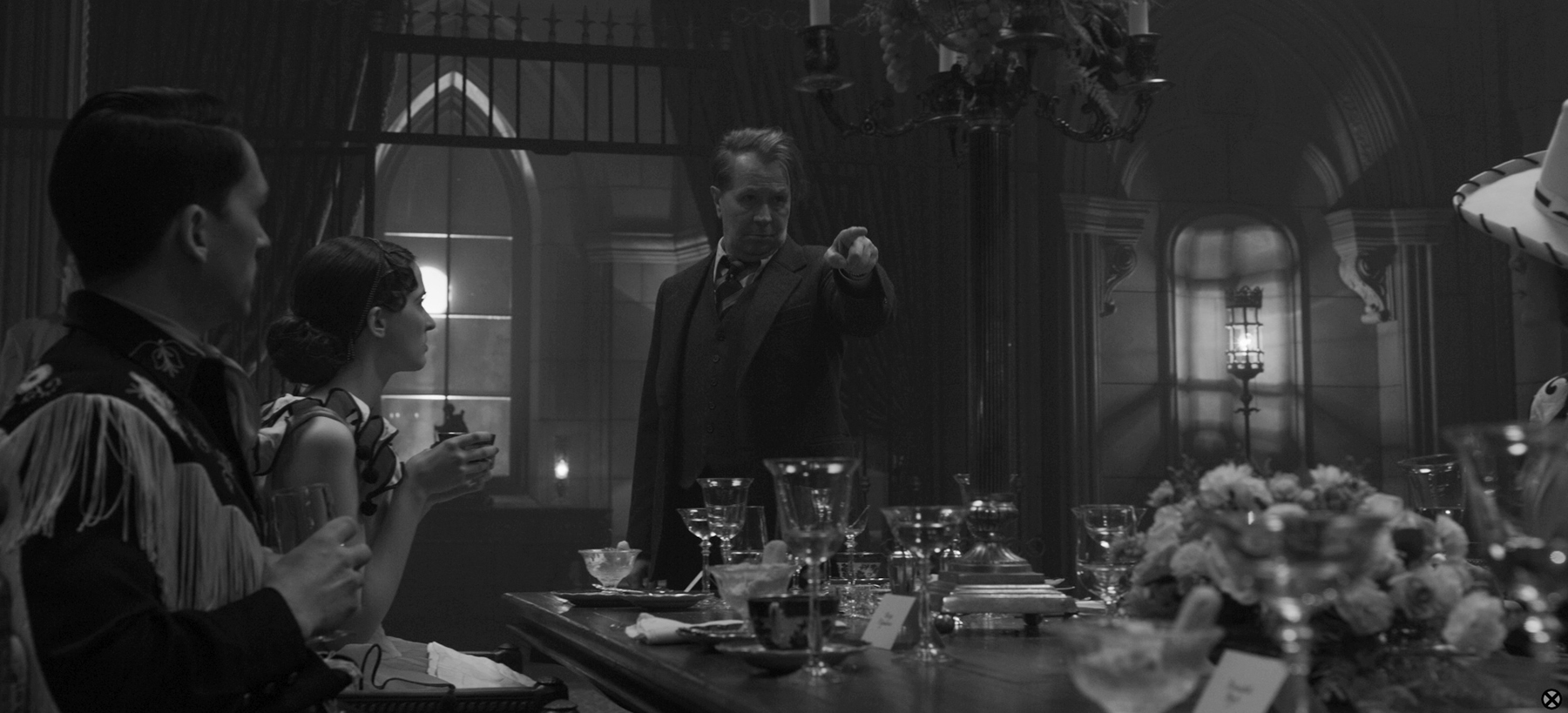
Amanda Seyfried (Marion), admitted that her favorite costume was the silky dress which she said, “felt like maple syrup.” She didn’t know what the material was or where you found it, but it was very decadent. What was the fabric and where did you find it?
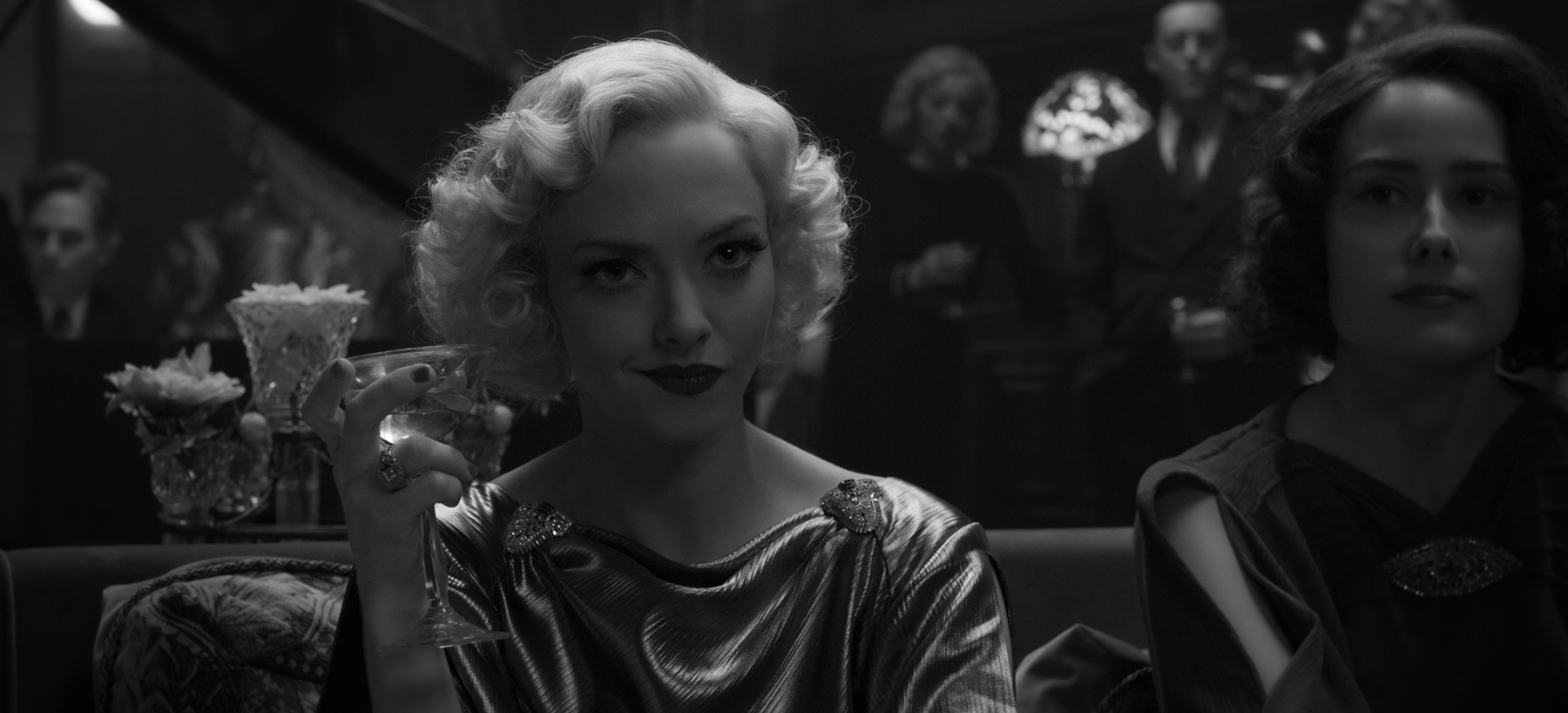
Amanda is talking about the dress in L. B. Mayer’s birthday party scene at the Hearst mansion. The actual fabric was gold lamé. It was a kind of antique colored gold with a tiny bit of a crinkle, almost like a pleat running through it. The fabric inspired the shape of the dress. I wanted it to have a low back and be very kind of form-fitting with a long tail, like a train at the end. But then once we found the fabric, we kind of started draping it on the dress form to see what the silhouette could be. For that particular scene, I wanted for Marion the same as for the circus party scene. I wanted to really make sure that she really was someone who you notice in the room. There’s a lot of other actors in that scene and background. And also, because she has this kind of interesting dialogue and conversation where she’s a bit political and she’s really engaging, I wanted her to look like a film star of that era. We knew it was going to be moonlit when Marion and Mank walk outside. I knew it would reflect and catch the light nicely.
Could you please talk about Marion’s coat with the furry collar? Marion looks quite glamorous when she is leaving the studio.

I found an image of Marion where she’s standing on the running board of a car and posing for a photograph. I thought we could kind of mimic that scene a bit. The coat is a really pale dusty blue which obviously you can’t tell, but it translated really nicely into black and white. And the fur collar is a faux fur to look like a gray toned kind of mink. Marion had an extensive jewelry collection. I always tried to use dress clips on her dresses or like here the big diamond brooch. One of the fascinating things about women’s clothes in the 30s was there were these really intricate sleeve patterns and different shapes of sleeves. So that was one of my favorite things about that coat as well, I really like this interesting full sleeve that kind of comes down and is really tight through the wrist.
What about another female character, Rita Alexander, played by Lily Collins? Rita is a completely different character, and her costumes were beautiful in a different way.
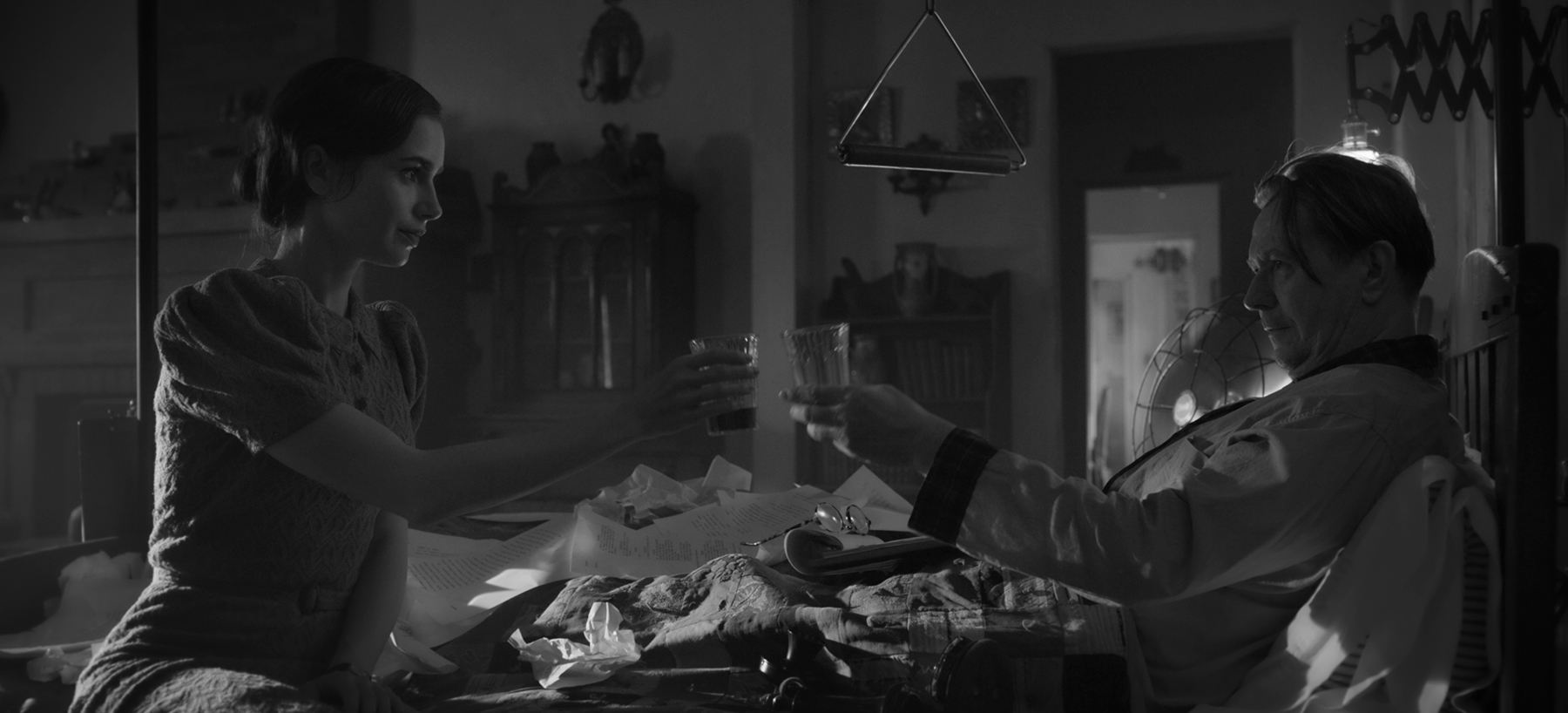
For Lily’s character, it was important to show that she is professional, especially the first time we see her. She’s going to be transcribing everything that he’s dictating to her, translating what he writes, she had to come across as very pulled together. There is the sensibility that she is English as well. In the first few scenes that we see of her, she has on a proper suit jacket and skirt. Then the transition happens that as she is there longer and it’s in the summer and it’s quite hot, her and Mank develop this friendship, so she becomes a bit more casual. One of the other dresses that we did make for her was a knit dress with a little round kind of Peter Pan collar and it’s belted at the waist. I really love the knit pieces of the 30s and 40s. I also used a few on Tuppence Middleton who plays Sara, Mank’s wife.
Let’s talk about Hearst, portrayed by Charles Dance. He wears a “director’s outfit” while filming in San Simeon.
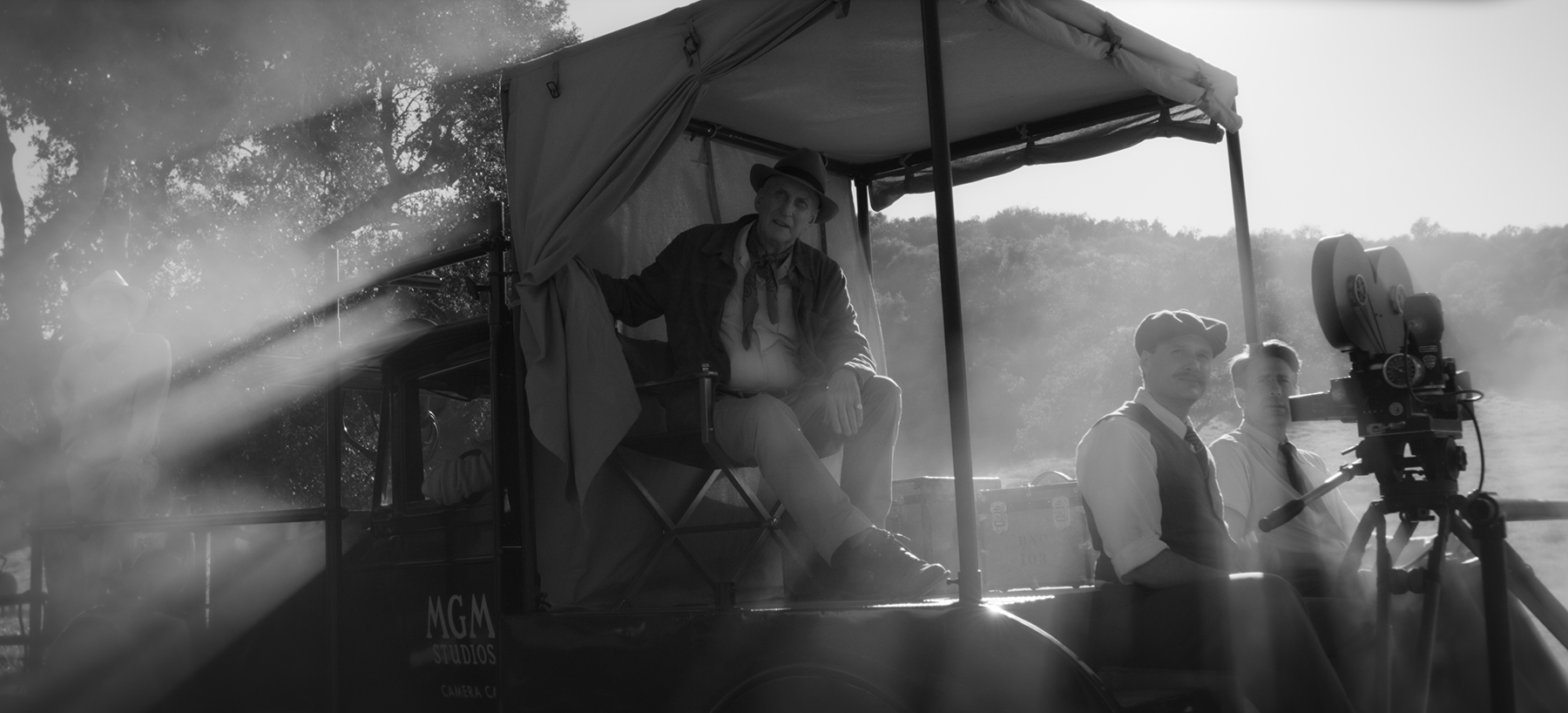
In this scene, he has a rayon shirt and trousers and a scarf tied around his neck. Normally when you see Hearst, he’s always in his suit and his clothing choices in real life were slightly dated because of his age. He kept more of classic early thirties shapes instead of transitioning to late 30s and early 40s shapes. And so that’s why, for the scene where he’s the director and he’s in the back of the picture car, I wanted him to look much more casual because it’s almost like he’s dressed up and playing a part. He’s playing the part of a director while they’re making these home movies, and I wanted to keep the tones very light because it’s kind of a garden party that they’re having. We did put most of the principles in light tones, like Marion’s in a light dress, but Mank in a dark suit because he’s come from this city.

There’s also L. B. Mayer (Arliss Howard) and Irving G. Thalberg (Fernidad Kingsley) at the garden party wearing resort clothing. They are kind of sitting on the sidelines giving their advice and their two cents.
Speaking of Mayer, (Arliss Howard), what could you tell us about his appearance?
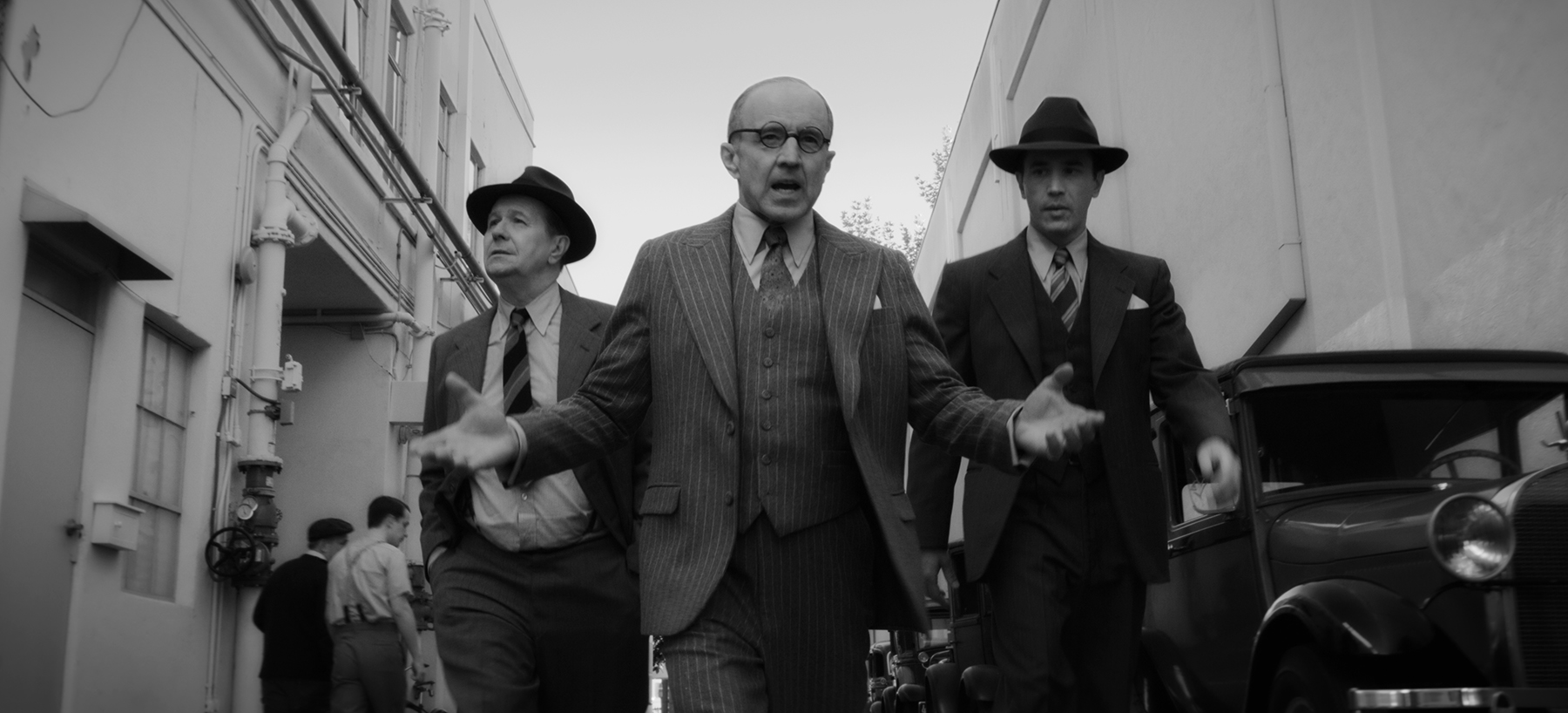
LB Mayer is obviously a narcissist and he’s very vain. We wanted to make sure that his suits fit very well that they were very nice qualities of wool. There’s a certain level of him where he’s always very pulled together, very presentable: three-piece suits. The styles for men change between the 30s and 40s, mainly the width of the pant, the lapel, and the ties became wider. But we kept him more towards the narrower side in the lapels and the width of the pant to keep him much more traditional that kind of fit his age and then the position that he had at the studio.
And there is Orson Welles portrayed by Tom Burke. We see him for the first time, not very clearly when he is visiting Mank in the hospital. But we definitely can recognize him by his distinguished look, thanks to his fedora and cloak.
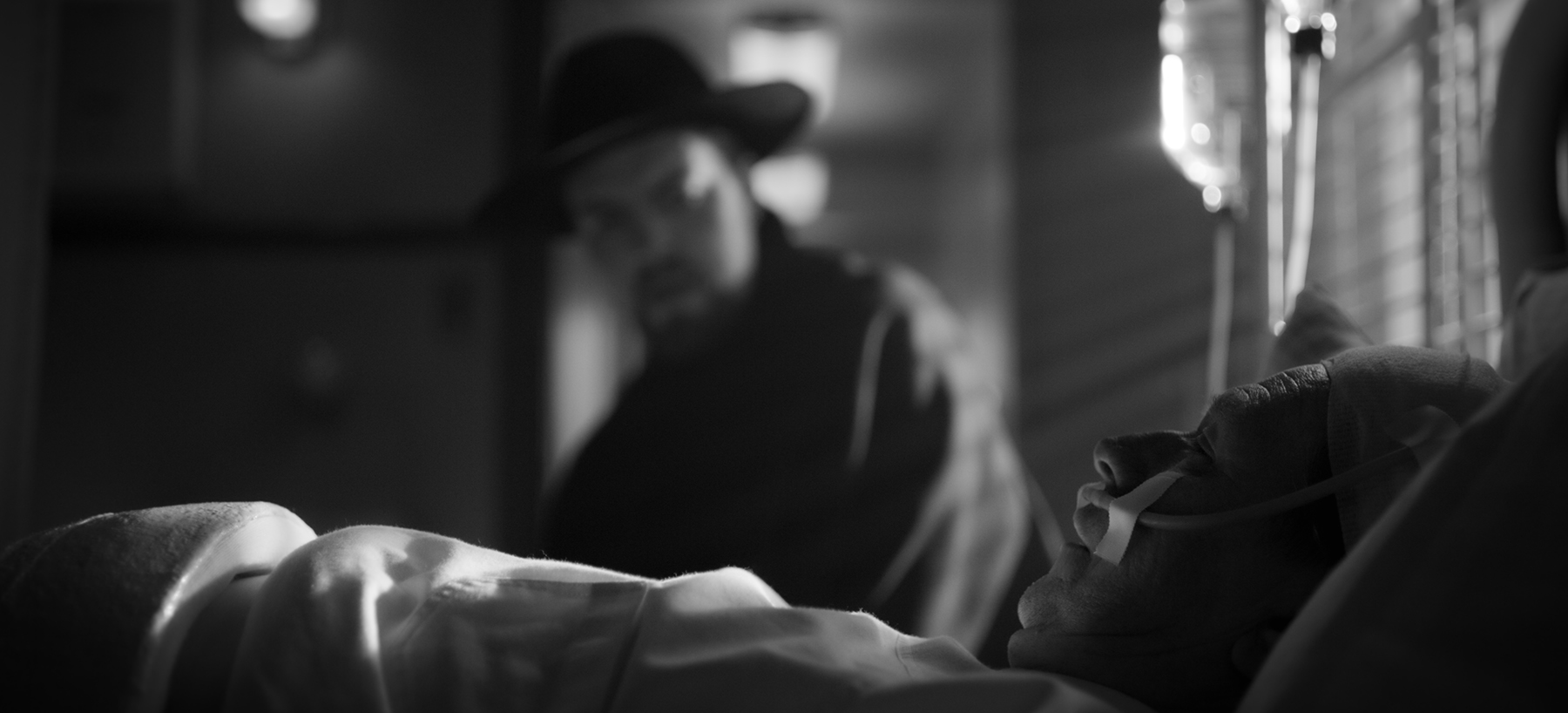
We wanted that iconic look of what everyone pictures of Orson Welles. Even though not everyone knows that when Orson directed and starred in Citizen Kane, he was only 25 years old. Most people just think of bigger, heavier, older Orson Welles, and they don’t really think of him being so young. But in this scene, Mank is in kind of a drug haze post-accident, which is why he is not sure if this ghostly figure that’s coming in to see him is really Orson Welles. So, re-enacting him in the big cape and the wide hat kind of fits that idea of what we all kind of conjure up in the Orson Welles’ look.
Then we see Orson again at the theater wearing an exquisite shirt.

Yes, one of the other things Orson was really known for, he had these really big, exaggerated collars on his dress shirts, that stood apart from everyone else in the film. None of the other men had these collars, they were about two and a half to three inches long. We made sure Orson’s the longest collars that we had on any of the other gentlemen in the film.
And the monogram.
Yes, we love it when people see the little details.
And finally, Herman Mankiewicz himself, the title character. Gary Oldman told us that one of the challenges for him to portray Mank was that there was nothing to hide behind, no heavy makeup, not even any glasses. In his own words, David wanted him “to be as naked” as he has ever been. He doesn’t want a veil between him and the audience. What were the challenges for you to create costumes for such a character?
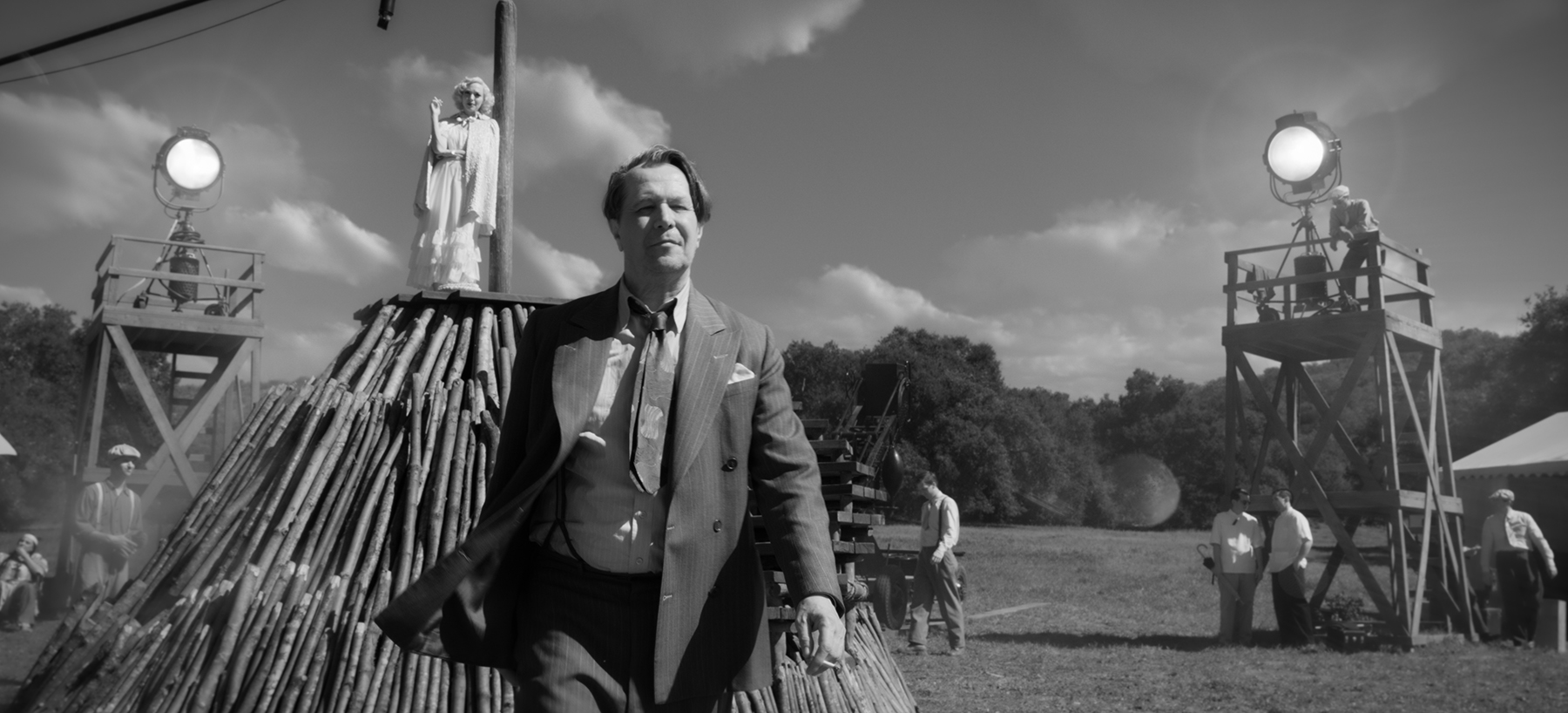
Gary is really quite brilliant. What was fantastic was that he was willing to put on the weight. He put on almost 15 pounds. In his real life he is quite an elegant, thin, fashionable man. To help him transform was really an honor. We made his clothing to be very disheveled so that you see that Mank wasn’t this really slick, chic person in Hollywood. He was this really authentic kind of court jester character where he was very smart, interesting, and political but had an alcohol problem and smoked a lot. We made sure that his clothes had sweat stains or nicotine stains on them. We would give him things to rumple up and put in his pockets whether it was broken cigarettes or bar receipts. Also, we made his shirt collars smaller so that they would fit his neck tight so that we could make a little bit of the neck fat come out. As he progressed and got older, we put the pants lower under his belly so that it looked like he had gained more weight and his stomach was bigger. It was just different things like that, trying to keep him in a way that his suits were classic but that they weren’t very fashionable, that he was somebody who didn’t shop a lot. His wife probably bought all his suits and he never really changed his look. The most important thing for him was his writing and the bit of his socializing. So, with him it was showing the difference of the progression through the ages because we can go from 30s to 40s and then also showing him in Victorville when he’s convalescing, working with the cast that he had on his leg.
Tell us, please, about the wine and dine scene that happens towards the end of the movie where Mank and Marion are having a picnic. Amanda is wearing another beautiful dress.

I love that dress. Everything Amanda wears we built. The dress was a black and white wide plaid organza. The fit of the dress had to be perfect because it’s also cut on the bias so it can fit across the hips nicely and have the back out, with the little yoke-like apron around the shoulders. When we’re shooting the first portion of that scene we shot it as an exterior and then we ended up doing it in the studio. There was a lot of wind happening on a real location and we were trying to keep the pieces on Amanda’s shoulders down without having them look like they were taped down and having them move just ever so slightly. That was a bit tricky. But yeah, I love that dress. Really beautiful on her and then we did the hat with the matching band on it.
There is something magical about this picture.
Yes, it was it was like a dream sequence. David had all these tiny-tiny little bits of pollen flying through the air. So, it was really beautiful.

